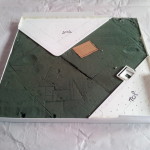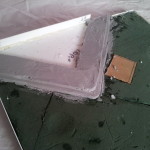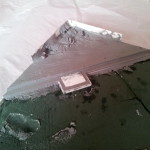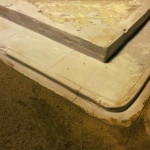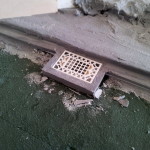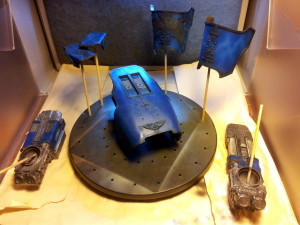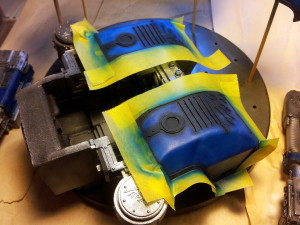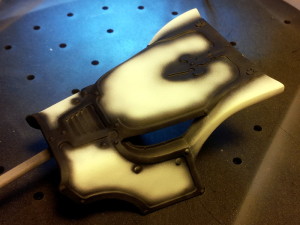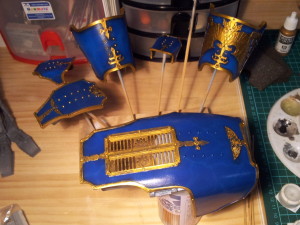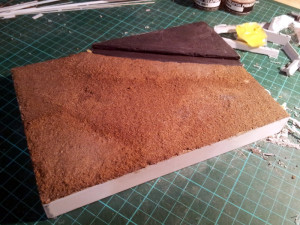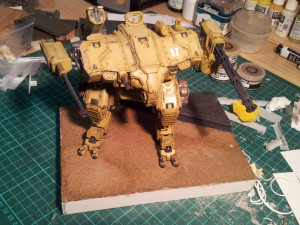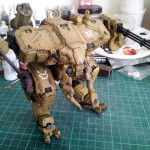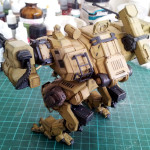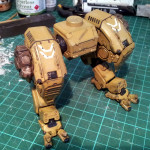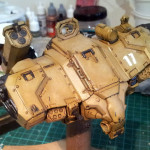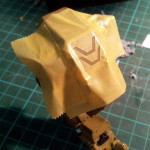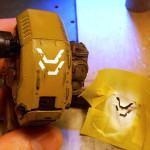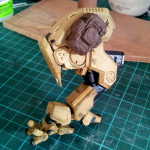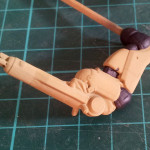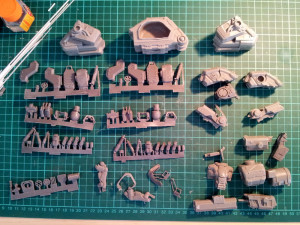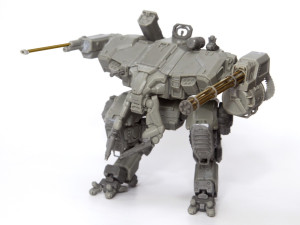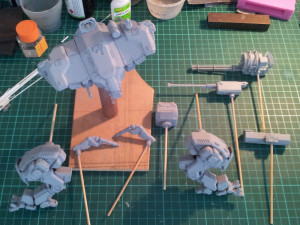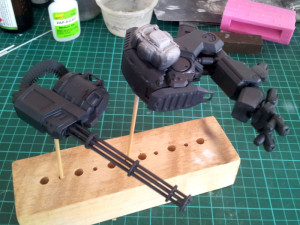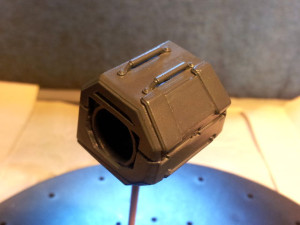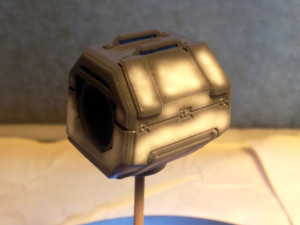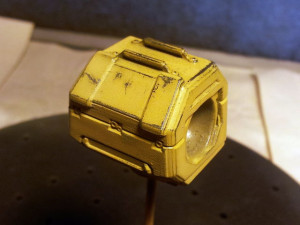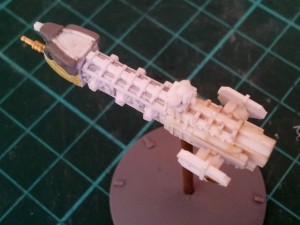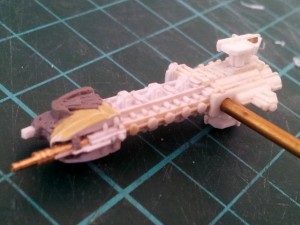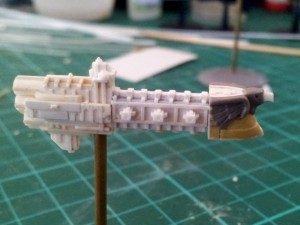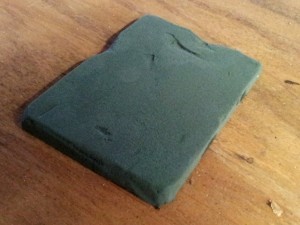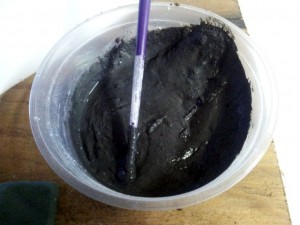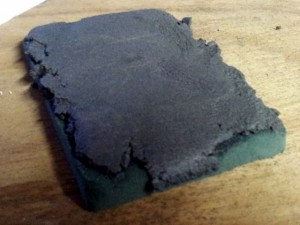WIP: Warhound Titan 6
Posted by Mangozac on July 4, 2013I’ve been doing some more work on the Warhound project of late. The last fortnight has seen some major work on the base. All of the plaster work is done (I’m using Hydrocal tinted with a little black paint) and has been cleaned up (scraping and sanding). I also scribed all of the details into the concrete and then laid the asphalt. The asphalt is a mix of plaster, fine sand, PVA and black acrylic (I just used cheap discount store acrylic and ran out of it near the end). It’s actually really difficult to smooth out properly and once it’s dried properly I’ll give it a bit of a smooth out ![]()
Here’s some progress shots:
Two things I felt were necessary for the road and guttering were a stormwater drain and a sewer manhole cover. More Inkscape and CNC work have facilitated some pieces I’m really pleased with:
Painting the Warhound is coming along nicely. All of the blue is done (except the legs, which haven’t been primed yet because I’ve been playing around with them sorting out the base and don’t want to damage the paint in the process). I decided to have a go at doing a marbled effect on the blue armour plates by mixing a little white with the blue colour and spraying it on in wavy lines (with the airbrush set at a very low pressure), but it was a bit too light and contrasted too much. So I had to spray a thin coat of the base blue colour over the top to dull the marbling down a bit…
I masked off the metallics that had already been done so that they didn’t get tinted blue from overspray:
Here’s a shot showing the pre-shading on the head armour plating. It’s since been painted yellow, but I have’t grabbed a pic of it yet. The pre-shading works really well with light colour like yellow!
I’m currently working on the brass banding and it is officially the most boring part of this entire project! It takes forever and requires two coats to get a good coverage (you can see what just one coat looks like on the torso armour plate).



